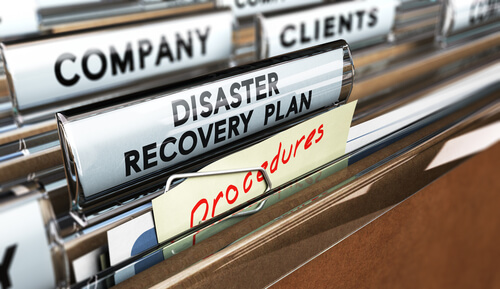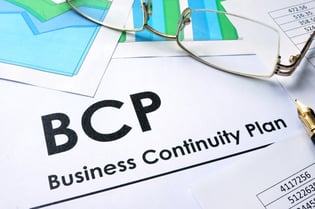
It’s not an exaggeration to say that your IT assets are the lifeblood of your organization. Unfortunately, companies are seeing more threats than ever before to their uptime, physical infrastructure, and data assets.
Our research shows that in 2017, 45 percent of unplanned downtime was due to hardware failure, and 35 percent was caused by power outages. These issues come from all sides:
- Natural disasters
- Fires, shorts, or explosions
- Unplanned patches or software updates that corrupt data
- External security breaches from malware or threat actors
- Old fashioned human error
And every second of downtime means money lost. Here’s what companies can expect to lose for every hour of downtime.
- $8,000 for small businesses
- $74,000 for medium-sized businesses
- A staggering $700,000 for large enterprises
Despite the risks, only 30 percent of companies claim to have a documented disaster recovery plan in place. This is a problem.
Building a Disaster Recovery Plan
Your disaster recovery plan will be built in tandem with a managed service provider (MSP) who has the software needed for threat detection, data backup, and system restoration.
- Determine the scope of your disaster recovery plan and document which assets should be prioritized in a crisis, including business-critical data, local desktops, and cloud servers;
- Create emergency response procedures that dictate which actions should be taken to limit damage, as well as working company-wide emergency training into the fold;
- Set backup schedules to create custom recovery points for your data based on set time periods;
- Determine a plan for restoring your affected system and how to leverage a temporary (backup) site while your primary assets are being re-established;
- Remember to incorporate strategies for customer relationship management, performing damage control by reaching out to affected customers; and
- Test your contingency plan and evaluate its performance under the guidance of your MSP.
Keep Your Business Safe
If you haven’t implemented a recovery plan until now, building a plan from the ground up may seem like a lot to get through. However, 96 percent of companies with a disaster recovery plan in place fully recover their operations when catastrophes occur.
The process is straightforward: Document your most important assets, train your team to take action, and work with an MSP who can provide the software you need for regular backups and system restoration. This is the easiest way to keep your business safe, no matter what crises come your way.
Ludovic Levivier
Founder & CEO, LINC Project, INC. a Managed Service Provider in New York and San Francisco



.png?width=306&height=50&name=Logo_width.jpg(2).png)


